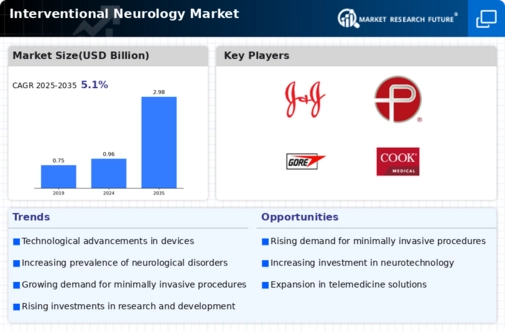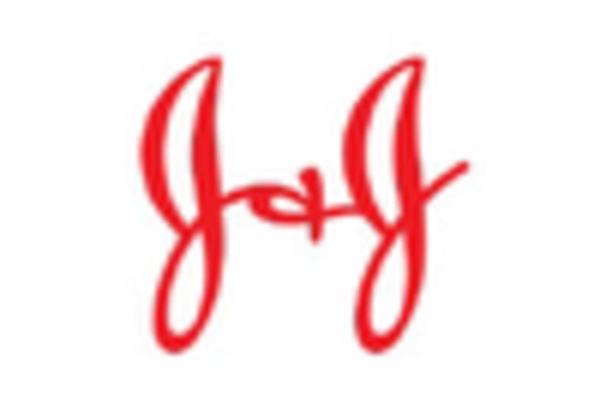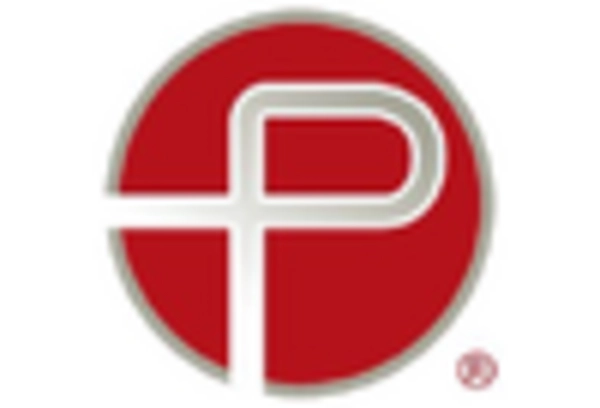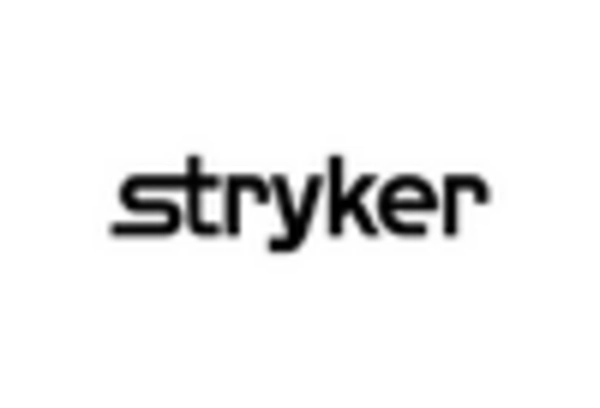-
Definition
-
Scope of the Study
- Research Objective
- Assumptions
- Limitations
-
Introduction
-
Primary Research
-
Secondary Research
-
Market Size Estimation
-
Drivers
-
Restraints
-
Opportunities
-
Macroeconomic Indicators
-
Technology Trends & Assessment
-
Porter’s Five Forces Analysis
- Bargaining Power of Suppliers
- Bargaining Power of Buyers
- Threat of New Entrants
- Threat of Substitutes
- Intensity of Rivalry
-
Value Chain Analysis
-
Chapter 6. Global Interventional Neurology Market, by Disease Pathology
-
Introduction
-
Cerebral Aneurysms
-
Market Estimates &Forecast, by Region, 2020-2027
-
Market Estimates &Forecast, by Country, 2020-2027
-
Arteriovenous Malformation and Fistulas
-
Market Estimates & Forecast, by Region, 2020-2027
-
Market Estimates & Forecast, by Country, 2020-2027
-
Ischemic Strokes
-
Market Estimates & Forecast, by Region, 2020-2027
-
Market Estimates & Forecast, by Country, 2020-2027
-
Others
-
Market Estimates & Forecast, by Region, 2020-2027
-
Market Estimates & Forecast, by Country, 2020-2027
-
Chapter 7. Global Interventional Neurology Market, by Product
-
Introduction
-
Aneurysm Coiling & Embolization Devices
- Embolic Coils
-
Market Estimates & Forecast, by Region, 2020-2027
-
Market Estimates & Forecast, by Country, 2020-2027
-
Coated Detachable Coils
-
Market Estimates & Forecast, by Region, 2020-2027
-
Market Estimates & Forecast, by Country, 2020-2027
-
Flow Diversion Devices
-
Market Estimates & Forecast, by Region, 2020-2027
-
Market Estimates & Forecast, by Country, 2020-2027
-
Liquid Embolic Agents
-
Market Estimates & Forecast, by Region, 2020-2027
-
Market Estimates & Forecast, by Country, 2020-2027
-
Cerebral Balloon Angioplasty and Stenting Systems
- Carotid Artery Stents
-
Market Estimates & Forecast, by Region, 2020-2027
-
Market Estimates & Forecast, by Country, 2020-2027
-
Embolic Protection Systems
-
Distal Filter Devices
-
Market Estimates & Forecast, by Region, 2020-2027
-
Market Estimates & Forecast, by Country, 2020-2027
-
Balloon Occlusion Devices
-
Market Estimates & Forecast, by Region, 2020-2027
-
Market Estimates & Forecast, by Country, 2020-2027
-
Neurothrombectomy Devices
- Clot Retrieval Devices
-
Market Estimates & Forecast, by Region, 2020-2027
-
Market Estimates & Forecast, by Country, 2020-2027
-
Suction and Aspiration Devices
-
Market Estimates & Forecast, by Region, 2020-2027
-
Market Estimates & Forecast, by Country, 2020-2027
-
Snares
-
Market Estimates & Forecast, by Region, 2020-2027
-
Market Estimates & Forecast, by Country, 2020-2027
-
Support Devices
- Microcatheters
-
Market Estimates & Forecast, by Region, 2020-2027
-
Market Estimates & Forecast, by Country, 2020-2027
-
Microguidewires
-
Market Estimates & Forecast, by Region, 2020-2027
-
Market Estimates & Forecast, by Country, 2020-2027
-
Chapter 8. Global Interventional Neurology Market, by End User
-
Introduction
-
Hospitals & Clinics
-
Market Estimates & Forecast, by Region, 2020-2027
-
Market Estimates & Forecast, by Country, 2020-2027
-
Ambulatory Surgical Centers
-
Market Estimates & Forecast, by Region, 2020-2027
-
Market Estimates & Forecast, by Country, 2020-2027
-
Research & Academic Institutes
-
Market Estimates & Forecast, by Region, 2020-2027
-
Market Estimates & Forecast, by Country, 2020-2027
-
Others
-
Market Estimates & Forecast, by Region, 2020-2027
-
Market Estimates & Forecast, by Country, 2020-2027
-
Chapter 9. Global Interventional Neurology Market, by Region
-
Introduction
-
Americas
- North America
- South America
-
Europe
- Western Europe
- Eastern Europe
-
Asia-Pacific
- Japan
- China
- India
- Australia
- South Korea
- Rest of Asia-Pacific
-
Middle East & Africa
- Middle East
- Africa
-
Chapter 10. Company Landscape
-
Introduction
-
Market Share Analysis
-
Key Development & Strategies
-
Chapter 11. Company Profiles
-
Abbott Laboratories
- Company Overview
- Type Overview
- Financials Overview
- Key Developments
- SWOT Analysis
-
Medtronic PLC
- Company Overview
- Type Overview
- Financial Overview
- Key Developments
- SWOT Analysis
-
Johnson & Johnson
- Company Overview
- Type Overview
- Financial Overview
- Key Development
- SWOT Analysis
-
Boston Scientific Corporation
- Company Overview
- Technologys/Business Segment Overview
- Financial Overview
- Key Development
- SWOT Analysis
-
Stryker Corporation
- Company Overview
- Type Overview
- Financial overview
- Key Developments
- SWOT Analysis
-
Terumo Corporation
- Company Overview
- Type Overview
- Financial Overview
- Key Developments
- SWOT Analysis
-
Penumbra, Inc.
- Overview
- Type Overview
- Financial Overview
- Key Developments
- SWOT Analysis
-
Microport Scientific Corporation
- Overview
- Type/ Technology Overview
- Financials
- Key Developments
- SWOT Analysis
-
Merit Medical Systems, Inc.
- Overview
- TypeOverview
- Financials
- Key Developments
- SWOT Analysis
-
W.L. Gore & Associates, Inc.
- Overview
- TypeOverview
- Financials
- Key Developments
- SWOT Analysis
-
B. Braun Melsungen AG
- Overview
- TypeOverview
- Financials
- Key Developments
- SWOT Analysis
-
Cook Medical
- Overview
- Type Overview
- Financials
- Key Developments
- SWOT Analysis
-
Other
-
Chapter 12 MRFR Conclusion
-
Key Findings
- From CEO’s Viewpoint
- Unmet Needs of the Market
-
Key Companies to Watch
-
Predictionsfor the Global Interventional Neurology Market
-
Chapter 13. Appendix
-
LIST OF TABLES
-
Interventional Neurology Market Synopsis, 2020-2027
-
Interventional Neurology Market Estimates and Forecast, 2020-2027 (USD Million)
-
Global Interventional Neurology Market, by Region, 2020-2027 (USD Million)
-
Global Interventional Neurology Market, by Disease Pathology, 2020-2027 (USD Million)
-
Global Interventional Neurology Market, by Product, 2020-2027 (USD Million)
-
Global Interventional Neurology Market, End User, 2020-2027 (USD Million)
-
North America: Interventional Neurology Market, by Disease Pathology, 2020-2027 (USD Million)
-
North America: Interventional Neurology Market, by Product, 2020-2027(USD Million)
-
North America: Interventional Neurology Market, End User, 2020-2027 (USDMillion)
-
US: Interventional Neurology Market, by Disease Pathology, 2020-2027 (USD Million)
-
US: Interventional Neurology Market, by Product, 2020-2027 (USD Million)
-
US: Interventional Neurology Market, End User, 2020-2027 (USD Million)
-
Canada:Interventional Neurology Market,byTechnique, 2020-2027 (USD Million)
-
Canada: Interventional Neurology Market, by Product, 2020-2027 (USD Million)
-
Canada: Interventional Neurology Market, End User, 2020-2027 (USDMillion)
-
South America: Interventional Neurology Market, by Disease Pathology, 2020-2027 (USD Million)
-
South America: Interventional Neurology Market, by Product, 2020-2027 (USD Million)
-
South America: Interventional Neurology Market, End User, 2020-2027 (USDMillion)
-
Europe: Interventional Neurology Market, by Disease Pathology, 2020-2027 (USD Million)
-
Europe: Interventional Neurology Market, by Product, 2020-2027 (USD Million)
-
Europe: Interventional Neurology Market, End User, 2020-2027 (USD Million)
-
Western Europe: Interventional Neurology Market, by Disease Pathology, 2020-2027 (USDMillion)
-
Western Europe: Interventional Neurology Market, by Product, 2020-2027 (USD Million)
-
Western Europe: Interventional Neurology Market, by End User, 2020-2027(USD Million)
-
Eastern Europe: Interventional Neurology Market, by Disease Pathology, 2020-2027 (USD Million)
-
Eastern Europe: Interventional Neurology Market, by Product, 2020-2027 (USD Million)
-
Eastern Europe: Interventional Neurology Market, End User, 2020-2027(USD Million)
-
Asia-Pacific: Interventional Neurology Market, by Disease Pathology, 2020-2027 (USD Million)
-
Asia-Pacific: Interventional Neurology Market,by Product, 2020-2027 (USD Million)
-
Asia-Pacific: Interventional Neurology Market, End User, 2020-2027 (USD Million)
-
Middle East & Africa: Interventional Neurology Market, by Disease Pathology, 2020-2027 (USD Million)
-
Middle East & Africa: Interventional Neurology Market, by Product,2020-2027 (USD Million)
-
Middle East & Africa: Interventional Neurology Market, End User, 2020-2027(USD Million)
-
LIST OF FIGURES
-
Research Process
-
Segmentation for Global Interventional Neurology Market
-
Market Dynamics for Global Interventional Neurology Market
-
Interventional Neurology Market Share, by Disease Pathology,2020
-
Interventional Neurology Market Share, by Product,2020
-
Interventional Neurology Market Share, End User, 2020
-
Interventional Neurology Market Share, by Region, 2020
-
North America: Interventional Neurology Market Share, by Country, 2020
-
Europe: Interventional Neurology Market Share, by Country, 2020
-
Asia-Pacific: Interventional Neurology Market Share, by Country, 2020
-
Middle East & Africa: Interventional Neurology Market Share, by Region, 2020
-
Interventional Neurology Market : Company Share Analysis, 2020 (%)
-
Abbott Laboratories: Key Financials
-
Abbott Laboratories: Segmental Revenue
-
Abbott Laboratories: Geographical Revenue
-
Medtronic PLC : Key Financials
-
Medtronic PLC : Segmental Revenue
-
Medtronic PLC : Geographical Revenue
-
Johnson & Johnson:Key Financials
-
Johnson & Johnson: Segmental Revenue
-
Johnson & Johnson: Geographical Revenue
-
Boston Scientific Corporation: Key Financials
-
Boston Scientific Corporation: Segmental Revenue
-
Boston Scientific Corporation: Geographical Revenue
-
Stryker Corporation:Key Financials
-
Stryker Corporation: Segmental Revenue
-
Stryker Corporation: Geographical Revenue
-
Terumo Corporation: Key Financials
-
Terumo Corporation: Segmental Revenue
-
Terumo Corporation: Geographical Revenue
-
Penumbra, Inc.: Key Financials
-
Penumbra, Inc.: Segmental Revenue
-
Penumbra, Inc.: Geographical Revenue
-
Microport Scientific Corporation:Key Financials
-
Microport Scientific Corporation: Segmental Revenue
-
Microport Scientific Corporation: Geographical Revenue
-
Merit Medical Systems, Inc.: Key Financials
-
Merit Medical Systems, Inc.: Segmental Revenue
-
Merit Medical Systems, Inc.: Geographical Revenue
-
W.L. Gore & Associates, Inc.: Key Financials
-
W.L. Gore & Associates, Inc.: Segmental Revenue
-
W.L. Gore & Associates, Inc.: Geographical Revenue
-
B. Braun Melsungen AG : Key Financials
-
B. Braun Melsungen AG :Segmental Revenue
-
B. Braun Melsungen AG : Geographical Revenue
-
Cook Medical: Key Financials
-
Cook Medical: Segmental Revenue
-
Cook Medical: Geographical Revenue

















Leave a Comment